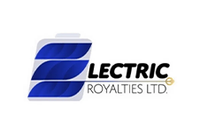Roskill Provides Cobalt Case Study in EU Report Analysis
Roskill has analyzed a recent report from the European Union’s Ad-Hoc Working Group on Defining Critical Raw Materials.
Last month, the European Union’s Ad-Hoc Working Group on Defining Critical Raw Materials published a report aimed at updating the “criticality analysis for raw materials” that it completed in 2010.
In a recent briefing paper, Roskill Information Services Ltd. examines that report, commenting that while it is useful in some ways, it also has disadvantages.
For instance:
The headline findings of critical raw materials studies are circulated far beyond audiences that understand the limitations of methodologies and the real implications of the findings. Creating lists and rankings can lead to scaremongering as terms like ‘risk’ and ‘critical’ are emotive. Defining materials in these terms can lead to misunderstandings amongst end-users, and potentially prompt unnecessary substitution.
By their nature multi-commodity assessments cannot examine everything that is relevant to particular material supply chains. This means that the headline findings of such studies can lead to misapprehensions over how ‘critical’ or ‘at risk’ certain materials are. In this briefing paper, Roskill explores the value in considering the wider supply chain dynamics of the raw materials outlined above in order to develop a more nuanced understanding of supply risk.
Continuing, Roskill provides a case study of cobalt as a critical material.
Click here to read the full Roskill Information Services Ltd. commentary.


